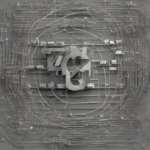Heat Exchanger Designs: A Comprehensive Guide
Heat exchangers are essential components in a wide range of industries, facilitating efficient energy transfer between fluids at different temperatures. Understanding the various types of heat exchanger designs is crucial for selecting the most suitable option for a specific application. This comprehensive guide delves into the different heat exchanger designs, exploring their principles, advantages, disadvantages, and applications.
Types of Heat Exchangers
Heat exchangers are broadly classified based on their construction and heat transfer mechanism. The most common types include:
1. Shell and Tube Heat Exchangers
- Overview: Shell and tube heat exchangers are among the most widely used types, characterized by a cylindrical shell containing a bundle of tubes. The fluid to be heated or cooled flows through the tubes, while the other fluid circulates around the tubes in the shell.
- Types:
- Single-pass: The shell-side fluid passes through the shell only once.
- Multi-pass: The shell-side fluid flows multiple times through the shell, increasing the heat transfer efficiency.
- Fixed tube sheet: Tubes are fixed to the tube sheet, limiting thermal expansion.
- U-tube: Tubes are U-shaped, facilitating thermal expansion and making cleaning easier.
- Floating head: The tube bundle is attached to a floating head, allowing for thermal expansion and ease of maintenance.
- Advantages:
- High heat transfer efficiency.
- Suitable for high pressures and temperatures.
- Versatile for various applications.
- Relatively low cost.
- Disadvantages:
- Cleaning can be challenging, especially for multi-pass designs.
- Potential for fouling and corrosion, reducing efficiency.
- Can be bulky and require significant space.
- Applications: Power plants, refineries, chemical processing, HVAC systems, and food processing.
2. Plate Heat Exchangers
- Overview: Plate heat exchangers consist of a series of thin, corrugated plates stacked and sealed together. The fluids flow in alternating channels between the plates, maximizing the heat transfer area.
- Types:
- Gasketed plate heat exchangers: Plates are held together by gaskets, allowing for easy disassembly and cleaning.
- Welded plate heat exchangers: Plates are welded together, offering greater durability and suitable for higher pressures.
- Advantages:
- High heat transfer efficiency per unit volume.
- Compact design and space-saving.
- Easy to clean and maintain.
- Suitable for high flow rates and low pressure drops.
- Disadvantages:
- Not suitable for very high pressures or temperatures.
- Gasket leaks can occur, requiring regular inspection.
- More expensive than shell and tube exchangers.
- Applications: Dairy and food processing, HVAC systems, refrigeration, and chemical processing.
3. Finned Tube Heat Exchangers
- Overview: Finned tube heat exchangers enhance heat transfer by adding fins to the tube surface, increasing the heat transfer area. They are commonly used in applications with one fluid flowing through the tubes and the other flowing across the fins.
- Types:
- Plain fins: Simple, flat fins attached to the tube surface.
- Louvered fins: Fins with a series of louvers to increase turbulence and heat transfer.
- Offset fins: Fins with a staggered arrangement to enhance heat transfer.
- Advantages:
- Significantly higher heat transfer efficiency compared to plain tubes.
- Suitable for applications with one fluid at a lower pressure.
- Wide range of materials and fin types available.
- Disadvantages:
- Can be more expensive than plain tubes.
- Higher pressure drop on the fin side.
- Can be prone to fouling if the fins are not adequately spaced.
- Applications: HVAC systems, automotive radiators, air coolers, and industrial process heating.
4. Air-Cooled Heat Exchangers
- Overview: Air-cooled heat exchangers utilize air as the cooling medium, typically employing finned tubes to enhance heat transfer. They are commonly used in applications where water is scarce or expensive.
- Types:
- Forced draft: Fans are used to force air across the finned tubes.
- Induced draft: Fans are used to draw air through the heat exchanger.
- Advantages:
- Eliminate the need for cooling water.
- Relatively low operating cost.
- Suitable for large capacity applications.
- Disadvantages:
- Can be large and require significant space.
- Efficiency is affected by ambient air temperature.
- Can be noisy due to the fans.
- Applications: Power plants, chemical processing, refineries, and industrial cooling.
5. Spiral Heat Exchangers
- Overview: Spiral heat exchangers consist of two flat, spirally wound metal sheets with alternating channels for the fluids. The spiral design promotes turbulent flow, increasing the heat transfer rate.
- Advantages:
- High heat transfer efficiency per unit volume.
- Compact design and space-saving.
- Suitable for high-pressure applications.
- Relatively easy to clean due to the smooth surfaces.
- Disadvantages:
- Can be more expensive than shell and tube exchangers.
- Not suitable for applications with large temperature differences.
- Limited range of materials and sizes.
- Applications: Food processing, chemical processing, wastewater treatment, and oil and gas production.
6. Double Pipe Heat Exchangers
- Overview: Double pipe heat exchangers are relatively simple, consisting of two concentric pipes. One fluid flows through the inner pipe, while the other flows through the annular space between the pipes.
- Advantages:
- Simple design and construction.
- Relatively low cost.
- Suitable for smaller applications.
- Disadvantages:
- Lower heat transfer efficiency compared to other designs.
- Limited heat transfer area.
- Not suitable for high pressures or flow rates.
- Applications: Small-scale industrial processes, heating and cooling systems, and laboratory applications.
7. Other Heat Exchanger Designs
- Scraped Surface Heat Exchangers: These are used for viscous fluids or those prone to fouling. A rotating scraper continuously removes deposits from the heat transfer surfaces, maintaining high efficiency.
- Compact Heat Exchangers: These are designed to maximize the heat transfer area in a small volume. They are commonly used in applications where space is limited, such as HVAC systems and automotive applications.
- Microchannel Heat Exchangers: These utilize tiny channels to enhance heat transfer. They are commonly found in electronic cooling applications and high-performance engines.
Factors to Consider When Choosing a Heat Exchanger Design
The selection of a suitable heat exchanger design depends on several factors, including:
- Fluid Properties: The properties of the fluids, including viscosity, thermal conductivity, and heat capacity, influence the heat transfer rate and the design choice.
- Temperature and Pressure: Operating temperatures and pressures dictate the materials and design requirements.
- Flow Rate: The flow rate of the fluids influences the pressure drop and heat transfer efficiency.
- Fouling Potential: The likelihood of fouling, which can reduce heat transfer efficiency, should be considered.
- Space and Cost: The available space and budget are important considerations for selecting a heat exchanger.
- Maintenance Requirements: The ease of cleaning, maintenance, and inspection influences the design choice.
Conclusion
Choosing the right heat exchanger design is crucial for optimizing energy efficiency, process performance, and overall system reliability. This comprehensive guide has explored various heat exchanger designs, highlighting their advantages, disadvantages, and applications. By understanding these different designs and the factors influencing their selection, engineers and designers can choose the most suitable heat exchanger for their specific requirements.








